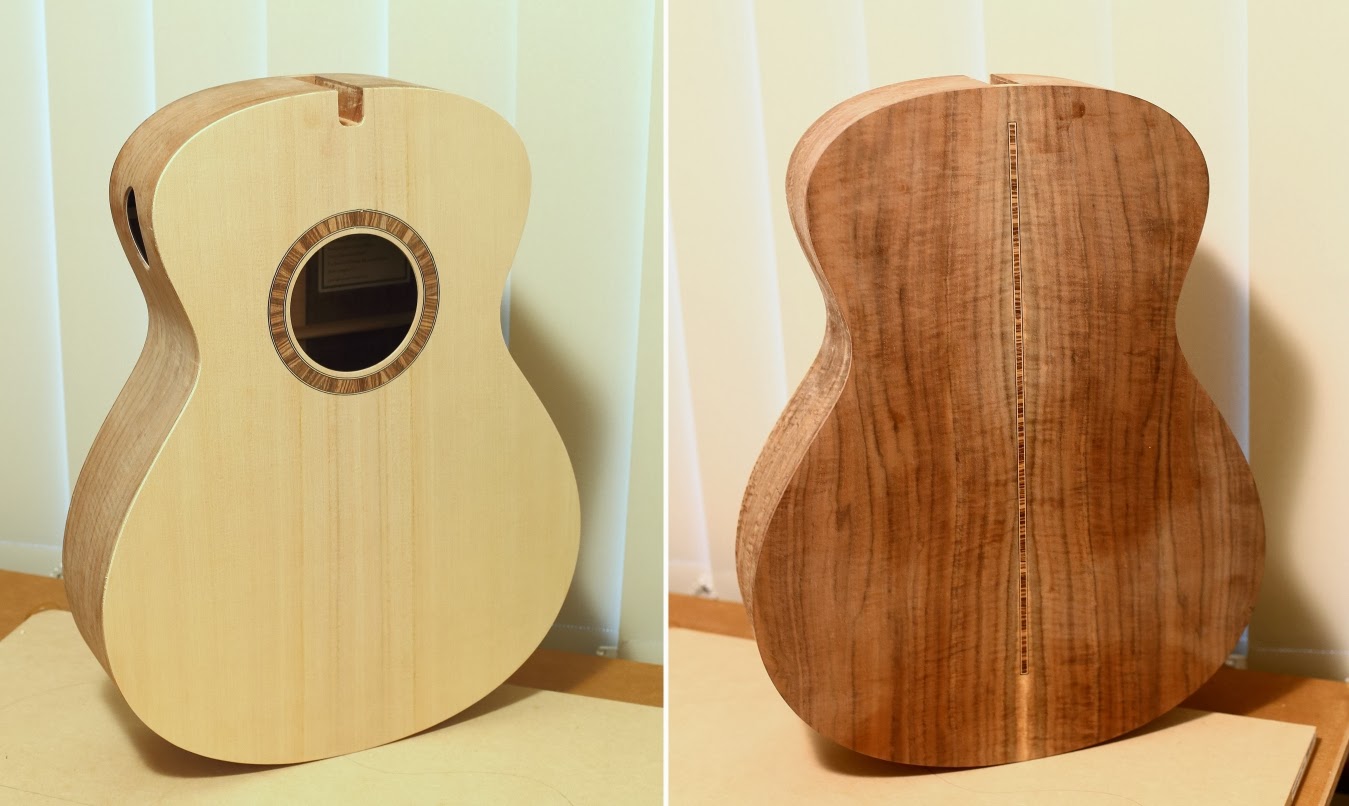Gluing the purfling to the binding before it's attached to the fretboard edge seemed to be the most logical approach when I began binding my fretboards, but I found it a challenge to accurately align the lower edge of the purfling with the underside of the board, no matter how careful I was when gluing and clamping it in place.
I managed to achieve acceptable results on the first couple of bound fretboards, but was uncomfortable with the process and felt there must be a better way. After dwelling on the problem off and on for a while, it occurred to me that I could just glue the binding on first - sans purfling - without fussing too much about aligning its lower edge exactly.
To solve the problem, I've knocked together what could best be described as a mini router table. With my laminate trimmer clamped in position from below, and a makeshift fence in place, I make some test cuts on scrap, adjusting the trimmer so that the rebate cut by the router bit will be the exact depth of the purfling strip. The width of the rebate isn't quite as critical, as long as it's less than or equal to the width of the purfling - any overhang can be trimmed off later.
Having set up the trimmer and fence, it's a simple matter of running the bound fretboard along the fence to accurately form the rebate for the purfling. The curved sections at the soundhole end of the board deserve some special treatment, but they're easily addressed using a similar approach.
All that remains is to glue the purfling strips into the rebate, with help from the same clamps used to glue kerfed linings strips in place. The purfling at the soundhole end of the fretboard is mitred to achieve a neat look.
All that remains is to glue the purfling strips into the rebate, with help from the same clamps used to glue kerfed linings strips in place. The purfling at the soundhole end of the fretboard is mitred to achieve a neat look.
I'm sure there are other equally effective methods, but this one works for me!
Cheers
Pete























